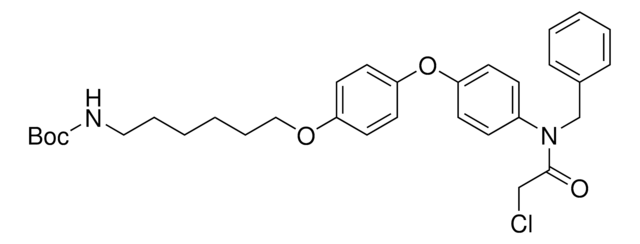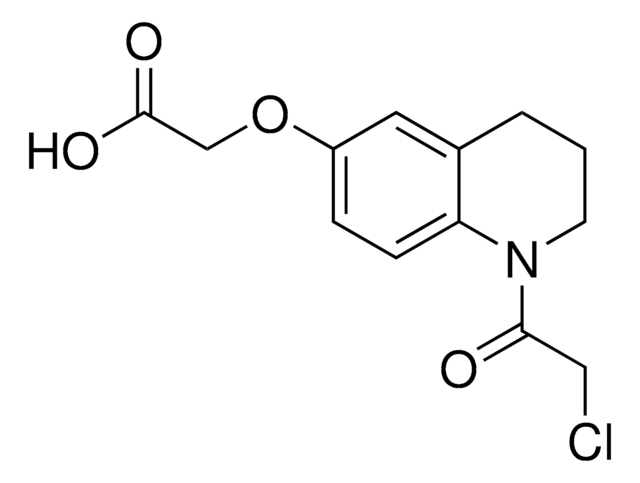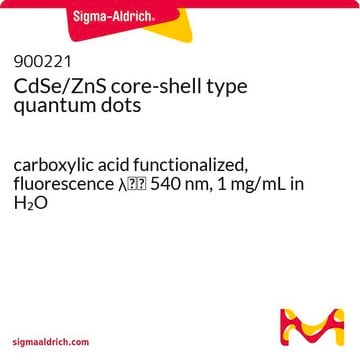919381
CCW16
≥95%
Sinonimo/i:
N-Benzyl-2-chloro-N-(4-(4-methoxyphenoxy)phenyl)acetamide, E3 ubiquitin ligase ligand, Ligand for PROTAC® research, RNF4-targeting ligand
Scegli un formato
About This Item
Prodotti consigliati
ligand
CCW16
Livello qualitativo
Saggio
≥95%
Stato
powder
Impiego in reazioni chimiche
reagent type: ligand
Gruppo funzionale
amine
Temperatura di conservazione
2-8°C
Stringa SMILE
COC1=CC=C(OC2=CC=C(N(CC3=CC=CC=C3)C(CCl)=O)C=C2)C=C1
InChI
1S/C22H20ClNO3/c1-26-19-11-13-21(14-12-19)27-20-9-7-18(8-10-20)24(22(25)15-23)16-17-5-3-2-4-6-17/h2-14H,15-16H2,1H3
DPADEQNOMBTITM-UHFFFAOYSA-N
Categorie correlate
Applicazioni
Altre note
Portal: Building PROTAC® Degraders for Targeted Protein Degradation
Covalent Ligand Screening Uncovers a RNF4 E3 Ligase Recruiter for Targeted Protein Degradation Applications
Targeted Protein Degradation by Small Molecules
Small-Molecule PROTACS: New Approaches to Protein Degradation
Targeted Protein Degradation: from Chemical Biology to Drug Discovery
Note legali
Prodotti correlati
Avvertenze
Warning
Indicazioni di pericolo
Consigli di prudenza
Classi di pericolo
Aquatic Acute 1 - Aquatic Chronic 1
Codice della classe di stoccaggio
11 - Combustible Solids
Classe di pericolosità dell'acqua (WGK)
WGK 3
Punto d’infiammabilità (°F)
Not applicable
Punto d’infiammabilità (°C)
Not applicable
Scegli una delle versioni più recenti:
Certificati d'analisi (COA)
It looks like we've run into a problem, but you can still download Certificates of Analysis from our Documenti section.
Se ti serve aiuto, non esitare a contattarci Servizio Clienti
Possiedi già questo prodotto?
I documenti relativi ai prodotti acquistati recentemente sono disponibili nell’Archivio dei documenti.
Articoli
Protein Degrader Building Blocks are a collection of crosslinker-E3 ligand conjugates with a pendant functional group for covalent linkage to a target ligand.
Active Filters
Il team dei nostri ricercatori vanta grande esperienza in tutte le aree della ricerca quali Life Science, scienza dei materiali, sintesi chimica, cromatografia, discipline analitiche, ecc..
Contatta l'Assistenza Tecnica.









